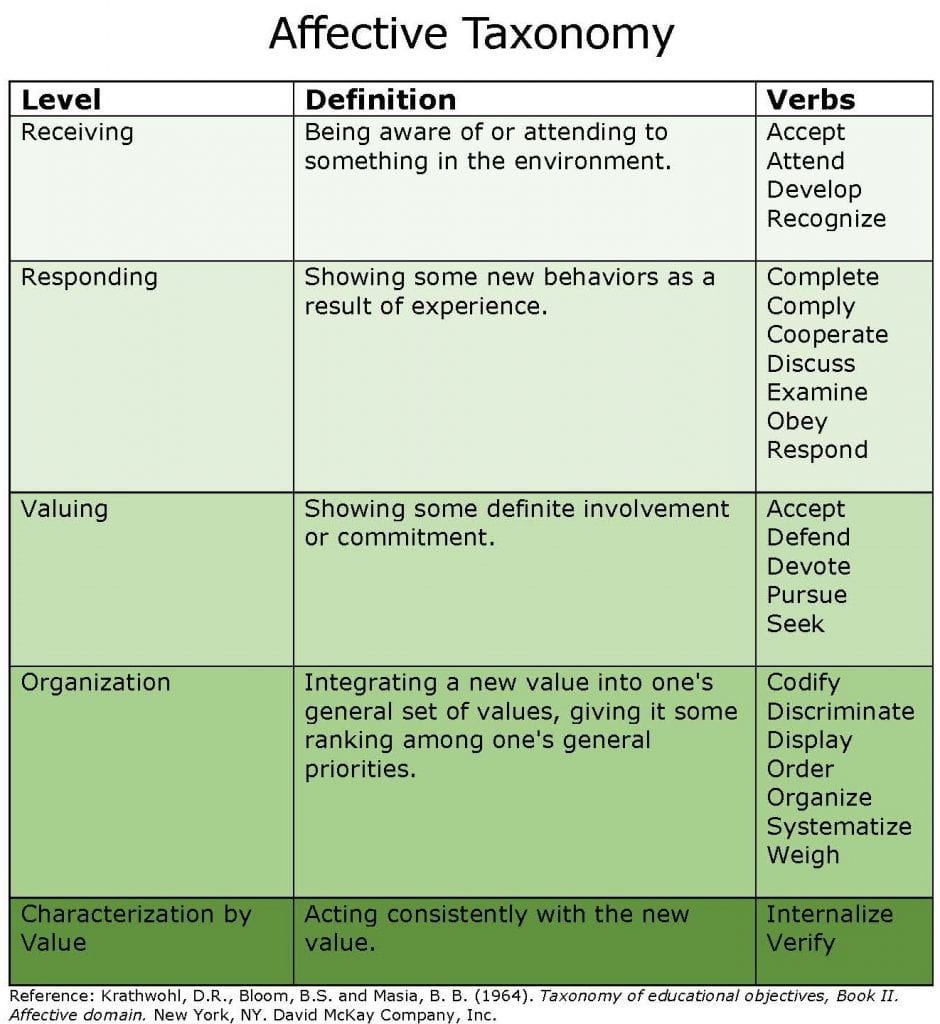Snapshot
Type of Interaction: Asynchronous
Type of Course: Online
Type of Activity: Low Stakes, Self-reflection
LMS Used: TRACS
Tools Used: Blogs
This post encourages the consideration of the affective domain when crafting appropriate learning objectives and offers an assessment solution in these instances.

Description
Sometimes behavioral objectives (think Bloom’s Taxonomy) just don’t get to the learning outcomes we have in mind for our students. When it comes to student transformations, the Affective Domain (Krathwohl, Bloom, & Masia, 1964) may be better suited in crafting a learning objective that is related to emotional processes. In role transition courses, for example, the focus is often on learning that enables students to articulate values, embrace higher levels of accountability, and to self-reflect. The taxonomy for the affective domain is a helpful place to begin – the difficulty is likely to be in the assessment of these learning objectives. In a situation where it is important for students to demonstrate the transformation or evolution of their general set of values, blogs could be the answer.
Blogs (in TRACS) provide an online journaling space for students. Readers and authors can also discuss the journal through comments. In this way, blogs are a flexible means for student engagement as a place to self-reflect and to interact with others.
Some ways in which some Texas State University faculty have used blogs in their courses:
- A weekly journal entry for students to write about their thoughts, experiences, and reflections over a period of time
- At specific points in the course when students were asked to synthesize a set of learning experiences to apply them to their own beliefs and values
- At the conclusion of a course to serve as an overall course self-assessment
Depending on the purpose of the blog activities, privacy settings can be set for faculty only or course-wide viewing in any of the above scenarios.
Process
Steps in creating learning objectives using the affective domain:
- Determine the desired learning outcomes.
- Ensure the affective domain is the appropriate domain of learning (behavioral, affective, psychomotor).
- Determine the degree of complexity (level) using the Affective Taxonomy.
- Choose a specific verb to begin your stated objective that addresses the level of complexity.
Considerations for using blogs in your course:
- Ensure blogs align as an appropriate assessment for your stated objective(s).
- Craft a prompt that establishes what the blog should be about.
- Specify privacy settings as part of the prompt.
- Encourage creative titles for each blog post. (No one gets excited to read a blog post entitled “Week 1 Blog.”)
- Clearly communicate your expectations with respect to grading as well as your expectations for how peers should respond.
Tool Implementation
TRACS has a Blog tool that makes the incorporation of blogging in a face-to-face, hybrid, or online course simple and straightforward. Alternatively, anyone can use platforms like WordPress , and Texas State hosts Word Press for use by its faculty, staff, and students. The continuity allows students to blog throughout a program, across courses, or even outside their role as a student.